You have no items in your shopping cart.
Champagne
Champagne Laurent-Perrier
(37 customer reviews)
Laurent-Perrier champagne was born in 1812, in Tours sur Marne, at the crossroads of the Marne's three main wine-growing regions: Côte des Blancs, Vallée de la Marne and Montagne de Reims. Whether white or rosé, it benefits from know-how handed down from the elders, but constantly refined to achieve excellence. Find out more
 Recommended by
Recommended byParker Wine Advocate - Bettane et Desseauve avant 2020 - Jancis Robinson
-

Shipped in
secured packaging - -27%
-
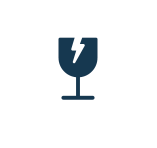
Garantie anti-casse :
Prise en charge totale
The winemaker
Laurent-Perrier champagne, born Pierlot
The maison de champagne Laurent-Perrier was founded in 1812 by André Michel Pierlot. This former tonnelier and bottler settled in Tour sur Marne to become a champagne merchant. He created the house in his village, on the plots les Plaisances and La Tour Glorieux.
His son Alphonse Pierlot succeeds him and expands the business. With no descendants, he passed on his legacy to hiscellar master, Eugène Laurent. Laurent died prematurely, and his widow, Mathilde Émilie Perrier, found herself at the head of the business. She decided to rename it, combining their two names, Laurent and Perrier. That's why the Laurent-Perrier champagne house is spelled with a hyphen. Mathilde reigns supreme. Thanks to her serious management, she managed to get the company through the First World War without too much damage. As early as 1920, she opened the company to international business, joining forces with Sir Alexander Fletcher Keith McKenzie to enter the British market.
Mathilde's daughter, Eugénie Hortense Laurent, inherited the company in 1925, but sold it to Marie-Louise de Nonancourt, née Lanson, in 1939. A widow with four children, she wanted to ensure the future of her descendants. One of her sons, Bernard de Nonancourt, became Chairman and CEO of the company in 1948. At that time, Laurent-Perrier champagne employed around twenty people and sold up to 80,000 bottles a year.
Bernard is passionate about his work and infuses the house with his boldness and creativity. Very close to the vignerons, he establishes privileged relationships to imprint his style, which is still Laurent-Perrier's today: elegance, finesse and freshness. He develops a unique range and succeeds in the feat of exporting it to over 160 countries.
The Laurent-Perrier style
To create his style, Bernard de Nonancourt succeeded in combining traditional Champagne practices with new technical approaches to winemaking. He established a know-how that enables the house to offer a range of unique wines, but always with consistency. Each cuvée is of the highest quality, with its own distinctive taste.
Laurent-Perrier vinifies vinifies its champagnes in stainless steel tanks
. Bernard de Nonancourt was the first to build athermo regulated cuverie. Since the late 50s, Laurent-Perrier has chosen to equip itself with stainless steel vats and still use them today. This choice enables the first fermentation to be controlled at low temperature, preserving a wine of prime freshness, while preserving the complexity of its aromas.Laurent-Perrier vinifies parcel by parcel
Since 1975, Laurent-Perrier Champagne has perpetuated the art of blending initiated by Alain Terrier, Chef de Cave from 1975 to 2005. The concept allows us to select raisins from the best areas of the Champagne vineyards and then vinify each batch separately. As each vine is worked separately, the blends offer a very wide palette of aromas, terroirs and styles. This is how parcel-based vinification became Laurent-Perrier's signature.Laurent-Perrier produces unique bottles
The idea of offering champagnes in original bottles came from Bernard de Nonancourt. Cuvée Grand Siècle set the ball rolling, with a refined, elegant bottle inspired by the first mouth-blown bottles. The Cuvée Rosé, with its rounded bottle bearing an escutcheon, was inspired by the era of King Henri IV.The Laurent-Perrier estate
When Eugène Laurent inherited the champagne house, his first task was to develop the estate. He acquired vines located on prime terroirs: Ambonnay Tours-Sur-Marne and Bouzy. He also bought several houses in Tours sur Marne, created a tasting laboratory and had 800 meters of cellars dug. Tours sur Marne is ideally located and is one of 17 communes classified as Grand Cru in Champagne.
Laurent-Perrier, white or rosé
Laurent-Perrier Blanc de Blancs Brut Nature
The chardonnay has always been Laurent-Perrier's flagship grape variety. The Blanc de Blancs Brut Nature is made from 100% of it. The grape variety is aged in the stainless steel vats that are the house's hallmark. The Chardonnay used for Blanc de Blancs Brut Nature comes from the Montage de Reims (Tours sur Marne, Villers-Marmery and Rilly La Montagne) and the Côte des Blancs (Avize, Cramant, Oiry and Chouilly).This blend achieves the perfect balance between the wines of the year and the reserve wines.It is made before cellaring and, during aging, the dégorgement is carried out without dosage. The wine always benefits from an additional resting time of several months, before being marketed.
The color of Blanc de Blancs Brut Nature is white and experiences a fine, persistent effervescence. Its nose is mineral with citrus notes. Its attack on the palate is lively and always expresses ideal balance, for a fresh, lemony finish.Serve your champagne between 9° and 11° with fish and seafood: salt-crusted sea bass, scallops, squid marinated in lemon, thyme, olive oil, cooked a la plancha.
Laurent-Perrier Cuvée Rosé
The first Cuvée Rosé Laurent-Perrier saw the light of day in 1968. It has since proved its capabilities, with excellent, consistently high quality. The champagne stands out with very pronounced aromas of fresh red fruit. Cuvée Rosé is 100% pinot noir. A dozen crus are selected, from the southern and northern sectors of the Montagne de Reims, including the famous Côte de Bouzy.You'll find vintages from Tours sur Marne, Louvois, Bouzy and Ambonnay. It's the 48- to 72-hour maceration following the harvest that creates the champagne's color, while intensely expressing the aromatic richness of pinot noir.
The color of Cuvée Rosé displays raspberry tones, with a few salmon nuances. Its nose is incredibly fresh, always straightforward, and expresses the aromas of red fruits: black cherry, redcurrant, strawberry and raspberry. The champagne is supple and round, giving it a mouthfeel with a clean, tangy attack. Served between 8° and 10°, in its iconic, round bottle, it goes wonderfully well with grilled prawns, marinated raw fish, Parma ham, as well as all desserts.

22 wines available
between 24.7 € and 324.28 €
between 24.7 € and 324.28 €

398 wine's scans
on Twil application
on Twil application
You might like Voir tous les vins de la région
- -32%
- -26%
- -18%
- -22%

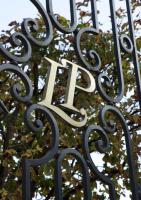
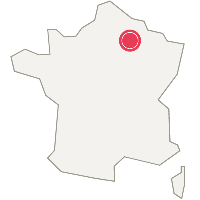
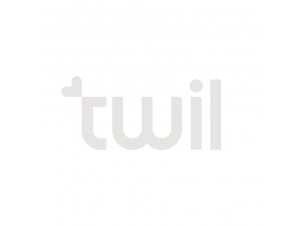







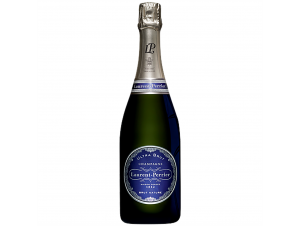
























 TWIL - Achat de Vin
TWIL - Achat de Vin


